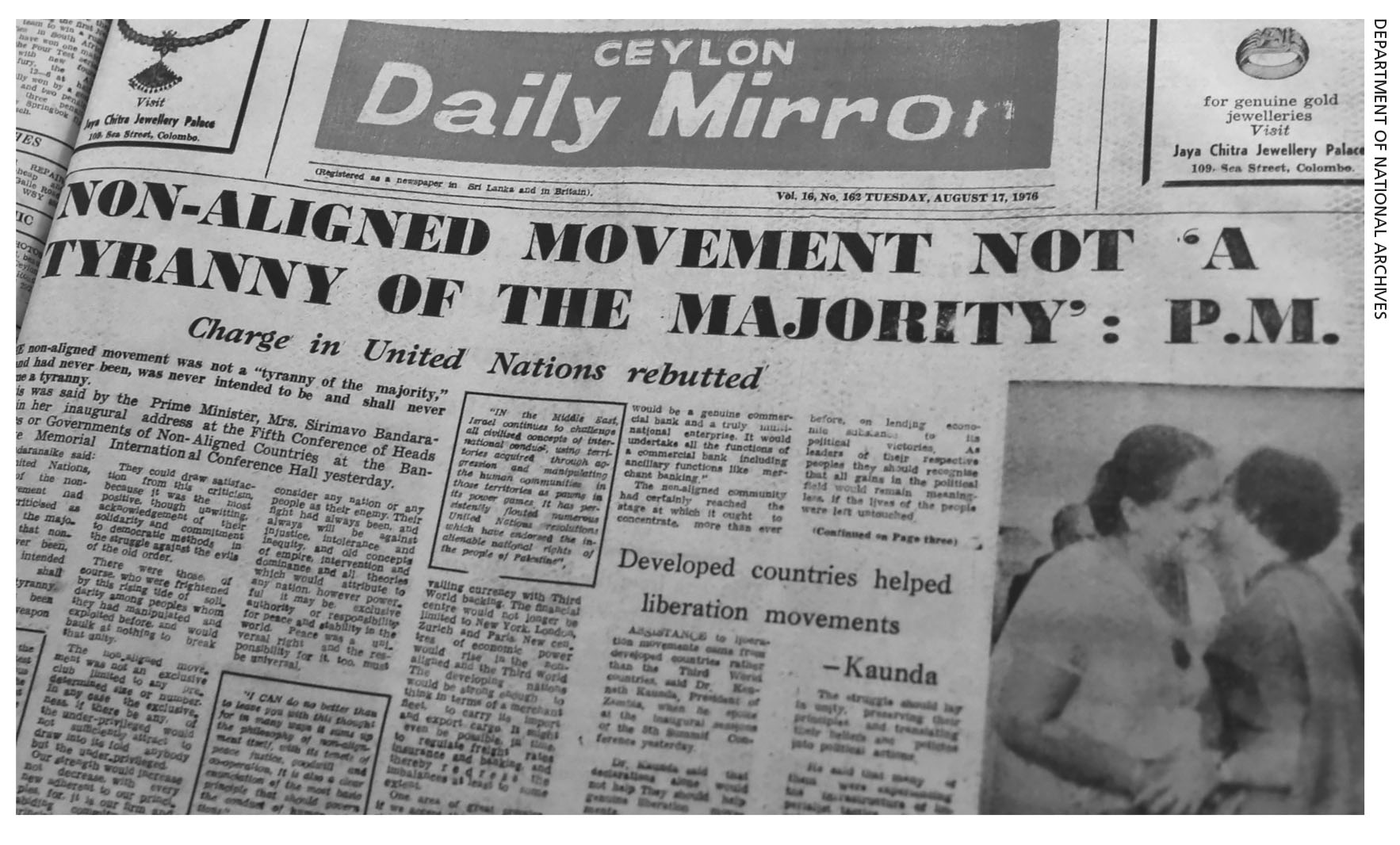1976
Sri Lanka Hosts Fifth NAM Summit Meeting
Steers Non-Aligned Movement on a new path
In times of sorrow, there is often no greater joy than to look back at the halcyon days… when a country that is now bankrupt, and at the mercy of its international creditors and donor agencies et al., was then at the height of its glory as a leader in a worldwide movement of no minor significance.
Indeed, those were the glory days!
That was when Sri Lanka – in its fourth year as a fully sovereign socialist republic – hosted the fifth summit of the Non-Aligned Movement (NAM) in its then capital Colombo.
The conference of the heads of state or government of NAM was attended by 86 delegates with the additional participation of 30 observers and invitees from every continent on the planet.
Organised by Sri Lanka’s High Commissioner to the UK (later Deshamanya) Vernon L. B. Mendis in his role as secretary-general of the conference, it was ably supported by Leelananda De Silva as secretary to the economic committee of the summit meeting.
Held at the Bandaranaike Memorial International Conference Hall (BMICH) from 16 to 19 August, this NAM leaders’ confab was the largest ever global summit held in Sri Lanka up to the time and represented the crowning glory of our island country’s leadership of a movement that strove to carve out a middle path for nation states caught between rival superpowers in an increasingly polarised world.
Today, the BMICH – the first purpose-built conference hall in South Asia – still stands as a gleaming testament to Sri Lanka’s desire to eschew equally the rhetoric and practical ramifications of the rivalry of Cold War powers, and prioritise the sociopolitical development and economic interests of smaller countries such Sri Lanka as articulated by conference host Prime Minister Sirimavo Bandaranaike.
NAM’s fifth summit – the first to be organised in Asia – formally defined the Non-Aligned Movement’s organisation and membership conditions, in addition to declaring Zionism as a form or racism… a definition that was reiterated at subsequent heads of state and government meetings of the movement.
Colombo, which played a key role in hosting and directing the conference, and for whom this summit meeting was a jewel in the crown of its foreign policy, saw the nation’s Central Bank commemorate a capstone in the country’s international standing by issuing specially minted five rupee coins.
The conference of the heads of state or government of NAM was attended by 86 delegates with the additional participation of 30 observers and invitees from every continent





